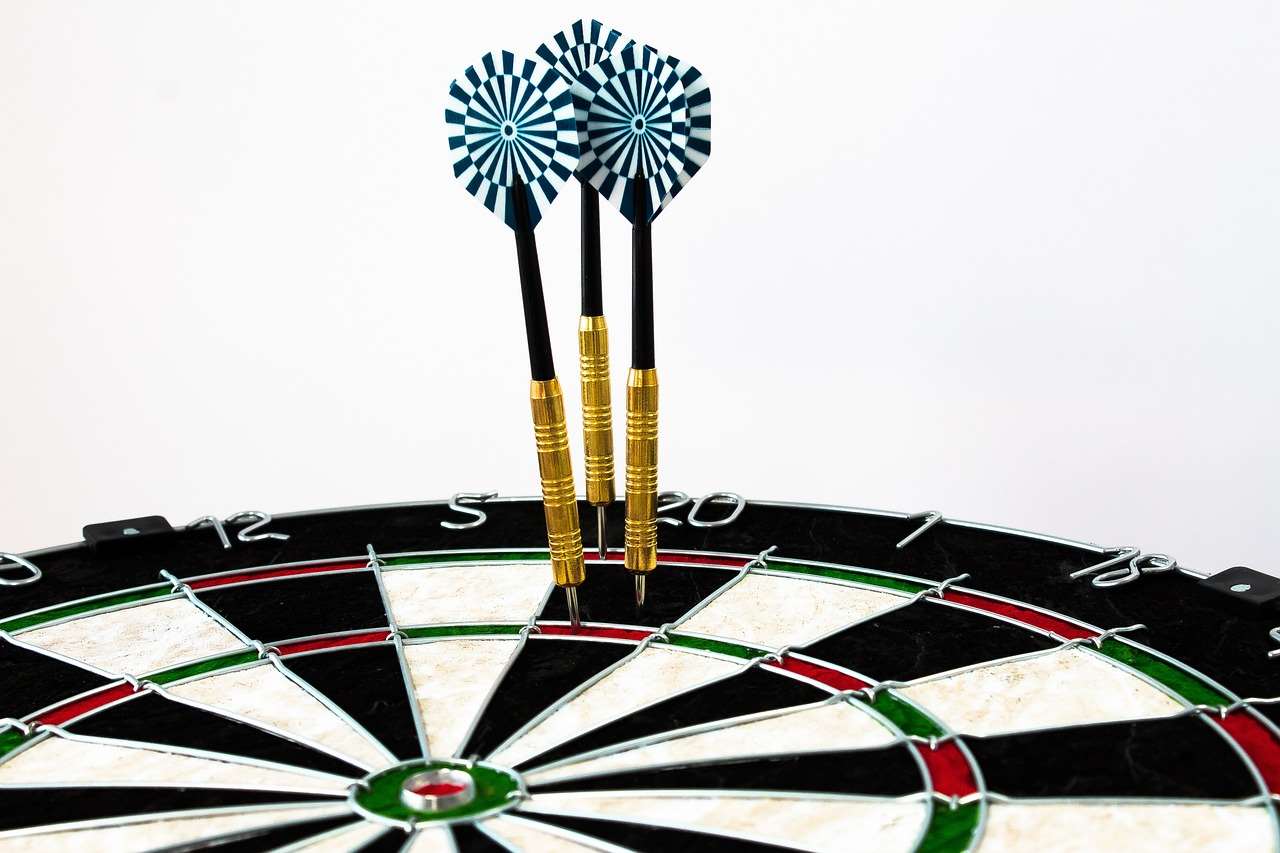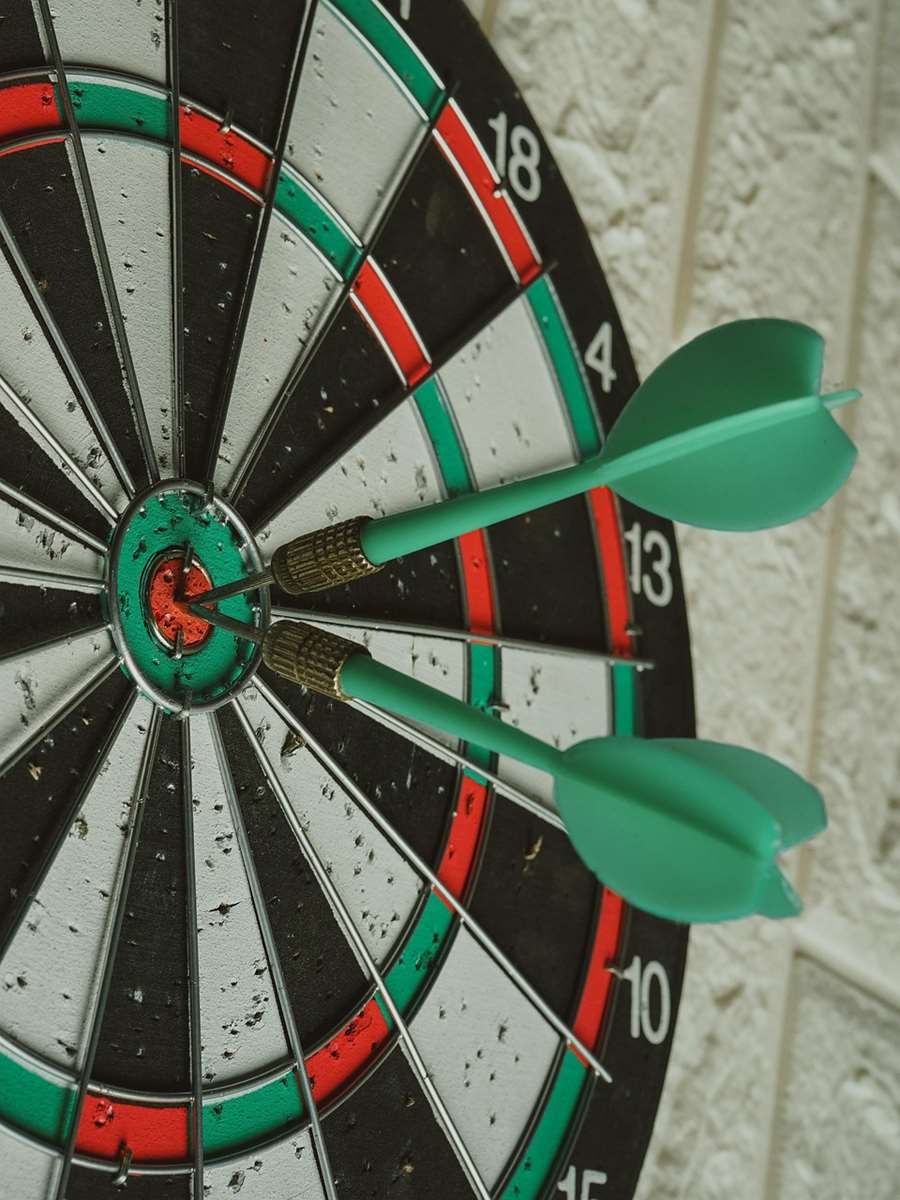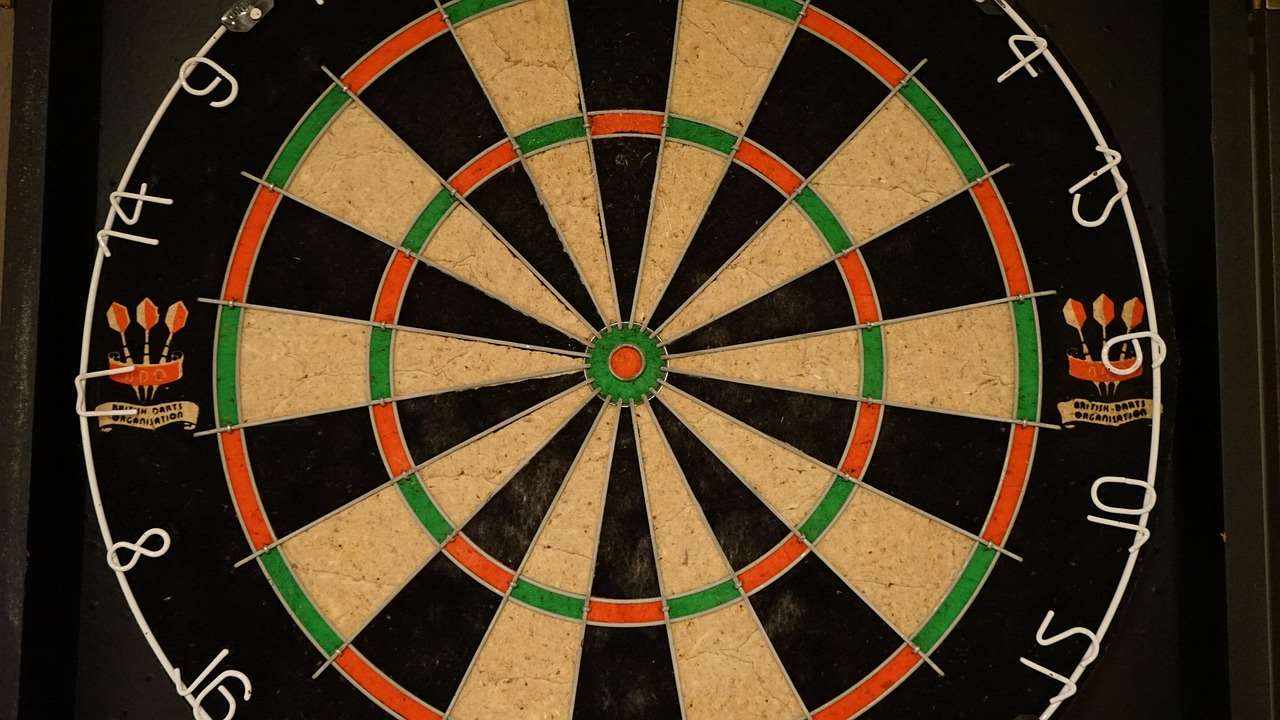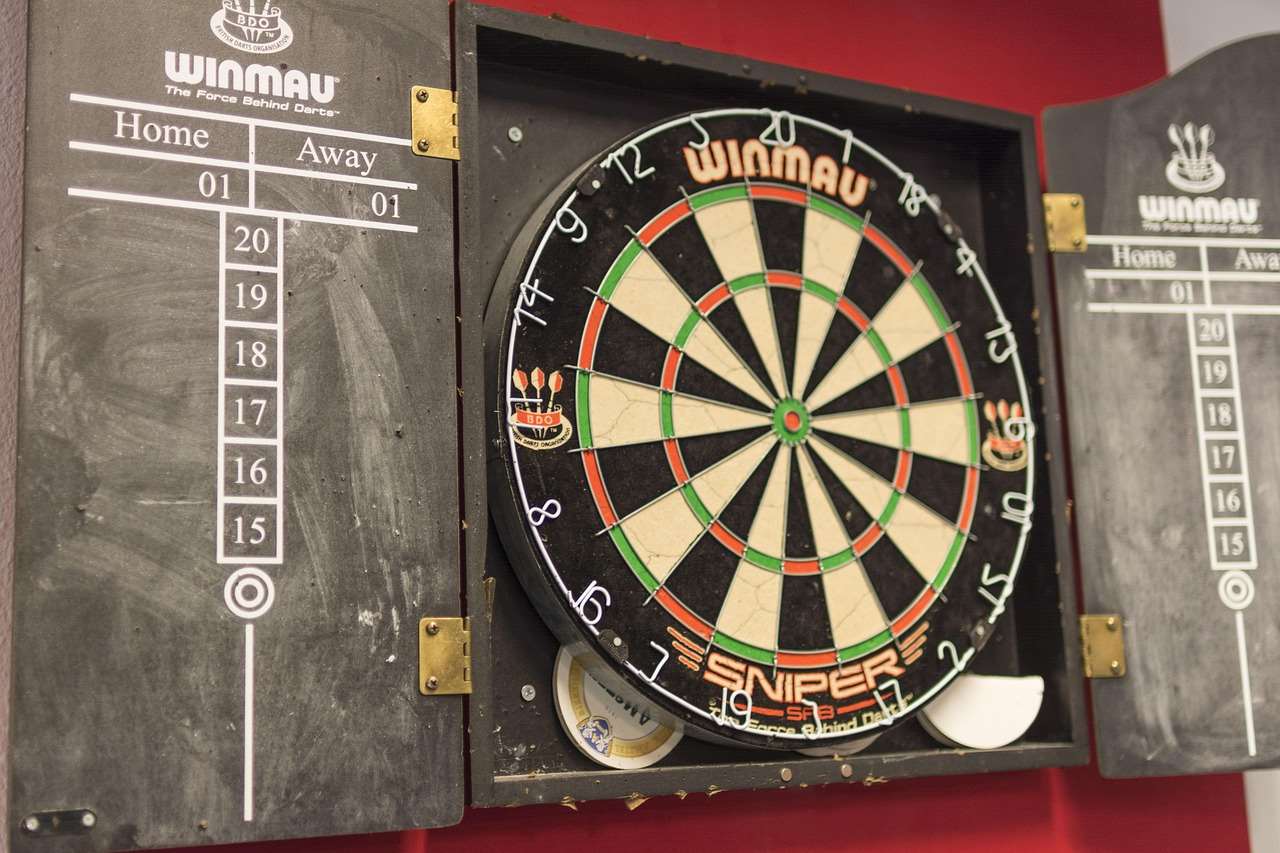Determining a definitive dart release year for specific dart models can be tricky, as manufacturers often don’t explicitly mark this information. This article explores how to research dart release years, factors influencing dart design, and where to find the best resources for dating your darts. We’ll also delve into collecting vintage darts and understanding their historical significance.
⚠️ Still Using Pen & Paper (or a Chalkboard)?! ⚠️
Step into the future! The Dart Counter App handles all the scoring, suggests checkouts, and tracks your stats automatically. It's easier than you think!
Try the Smart Dart Counter App FREE!Ready for an upgrade? Click above!
Understanding the Elusive Dart Release Year
Pinpointing the exact dart release year for a particular set of darts isn’t always straightforward. Unlike products with standardized manufacturing dates, dart manufacturers often don’t stamp release years directly onto the darts or packaging. This is especially true for older or vintage darts.
Several factors contribute to this lack of clear dating:
- Production Runs: Dart models might be produced for several years without significant changes, making it difficult to isolate a specific release year.
- Limited Documentation: Some manufacturers, especially smaller or historical ones, may not have kept detailed records of production runs and model releases.
- Rebranding and Re-releases: Darts are sometimes re-released under new names or with slight modifications, further complicating identification of the original dart release year.
- Distribution Channels: Different retailers may have received stock at varying times, blurring the lines of when a particular model was generally available.

Where to Start Your Search for the Dart Release Year
Despite the challenges, there are several avenues you can explore to determine the dart release year of your darts:
- Manufacturer Websites: Check the manufacturer’s website, especially the archive or discontinued products section. While not always complete, it might offer clues about the lifespan of a particular model.
- Online Dart Forums and Communities: Darts forums are invaluable resources. Seasoned collectors and enthusiasts often possess extensive knowledge of dart models and their history. Posting photos and descriptions of your darts can often lead to identification and an estimated dart release year.
- Vintage Dart Catalogs: If you’re dealing with older darts, try to find vintage dart catalogs online. These catalogs can provide information about the models available during specific periods.
- Auction Sites (eBay, etc.): Search for similar darts on auction sites. The listings may contain information about the release date or period.
- Dart Retailers: Contact dart retailers who have been in business for a long time. They might have records or knowledge about older models.
Factors Influencing Dart Design Over Time
Understanding the factors that influence dart design can also provide clues about the approximate dart release year. Here are some key trends:
- Material Changes: Early darts were often made of brass. The introduction of tungsten as a primary material significantly impacted dart design, allowing for slimmer barrels and higher densities. Identifying the material can provide a general timeframe.
- Grip Styles: Grip styles have evolved over time. Early darts often had simple ringed grips, while modern darts feature complex and specialized grip patterns. The presence of specific grip styles can help narrow down the release year.
- Point Technology: The introduction of replaceable points and point systems like Swiss Point (are swiss point darts better) provides clues about the dart release year, as these technologies have specific timelines of introduction.
- Flights and Shafts: Flight and shaft materials and shapes have also changed over time. The evolution from feather flights to nylon and then to molded flights offers hints about the age of the darts. Similarly, the introduction of spinning shafts affected dart design.

Consider the overall construction and design of the dart in relation to these trends. Does it utilize a relatively new technology or material? Or does it seem to be a more traditional design?
Dating Your Darts: A Practical Guide
Here’s a step-by-step guide to help you estimate the dart release year of your darts:
- Gather Information: Note down everything you know about the darts – the manufacturer, markings, dimensions, weight, materials, and any unique features. Take clear photos of the darts from different angles.
- Online Research: Start with a Google image search using keywords based on your collected information. This may lead to similar darts being identified.
- Consult Dart Forums: Join a reputable dart forum and post your photos and information. Be prepared to answer questions from experienced members.
- Check Manufacturer Archives: Explore the manufacturer’s website for archived catalogs or product information.
- Compare with Known Models: Compare your darts with known models from specific years. Look for similarities in design and materials.
Remember that estimating the dart release year is often an educated guess. Multiple sources and comparisons can increase the accuracy of your estimate.
Collecting Vintage Darts: A Rewarding Hobby
Collecting vintage darts can be a fascinating and rewarding hobby. It provides insights into the history of the sport and allows you to appreciate the craftsmanship of older dart models.
When collecting vintage darts, consider the following:
- Condition: The condition of the darts significantly affects their value. Darts in good condition are generally more desirable.
- Rarity: Rare or limited-edition darts are often highly sought after by collectors.
- Historical Significance: Darts associated with famous players or events can be particularly valuable.
- Completeness: Complete sets, including the original packaging and accessories, are worth more than incomplete ones.

Before investing in vintage darts, research their history and value. Consult with experienced collectors and dealers to avoid overpaying or purchasing fakes. Also, understanding the darts finishing rules can add another layer of appreciation to the game and the equipment used.
The Impact of Technology on Dart Design
Technological advancements have dramatically impacted dart design over the years. The introduction of computer-aided design (CAD) and manufacturing (CAM) technologies has allowed for the creation of increasingly complex and precise dart designs. The pursuit of darts precision has fueled much of this innovation.
Here are some examples of technological influences:
- Tungsten Manufacturing: Advanced powder metallurgy techniques have enabled the production of high-density tungsten darts with intricate shapes and grip patterns.
- CNC Machining: Computer-controlled machining allows for the creation of highly detailed and consistent dart barrels.
- Flight and Shaft Materials: The development of new polymers and composites has led to improved flight and shaft designs, enhancing aerodynamics and durability.
Modern dart design is a blend of art and science, with manufacturers constantly pushing the boundaries of what’s possible. While technology provides the tools, understanding of aerodynamics and player ergonomics are also vital in creating effective darts.

Resources for Dart Enthusiasts
Here are some valuable resources for dart enthusiasts who want to learn more about dart history, design, and the dart release year of specific models:
- Dart Forums: Websites like Darts Nutz offer extensive discussions, reviews, and identification assistance.
- Manufacturer Websites: Check the websites of major dart manufacturers like Unicorn, Winmau, Target Darts, and Harrows for product information and archives.
- Dart Retailer Websites: Websites like Darts Corner and Double Top Darts often have detailed product descriptions and customer reviews.
- The Digital dart score app (https://dartcounterapp.com/): A useful resource for players of all levels.
- Dart Blogs and Websites: Look for dart blogs and websites that focus on dart history and collecting.
Dart Release Year: Final Thoughts and Considerations
Determining the precise dart release year for your darts can be a challenging but rewarding endeavor. By combining online research, community knowledge, and an understanding of dart design trends, you can often narrow down the possibilities and gain a better appreciation for the history of your darts.
Remember to consider these points:
- Accuracy is Difficult: Precise dating is often impossible. Focus on estimating the era or period of manufacture.
- Collaboration is Key: Engage with the dart community for assistance and insights.
- Enjoy the Process: The search for information can be just as rewarding as finding the answer.

Whether you’re a seasoned collector or simply curious about your darts, understanding the factors that influence dart design and the resources available for research can enhance your enjoyment of the sport.
By exploring the history and technology behind your equipment, you can deepen your appreciation for the game of darts. Now, armed with this knowledge, go forth and continue your journey in the world of darts! Consider exploring darts room set up for the optimal playing environment.
Hi, I’m Dieter, and I created Dartcounter (Dartcounterapp.com). My motivation wasn’t being a darts expert – quite the opposite! When I first started playing, I loved the game but found keeping accurate scores and tracking stats difficult and distracting.
I figured I couldn’t be the only one struggling with this. So, I decided to build a solution: an easy-to-use application that everyone, no matter their experience level, could use to manage scoring effortlessly.
My goal for Dartcounter was simple: let the app handle the numbers – the scoring, the averages, the stats, even checkout suggestions – so players could focus purely on their throw and enjoying the game. It began as a way to solve my own beginner’s problem, and I’m thrilled it has grown into a helpful tool for the wider darts community.